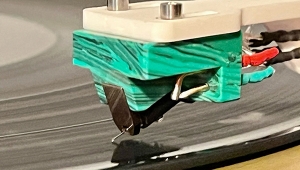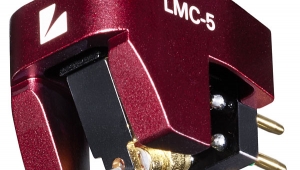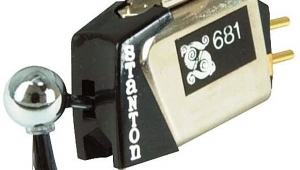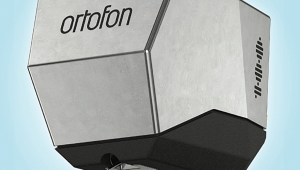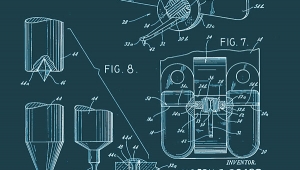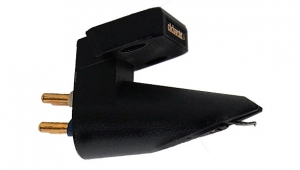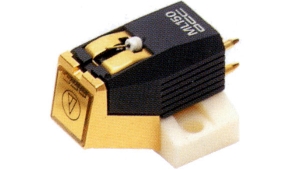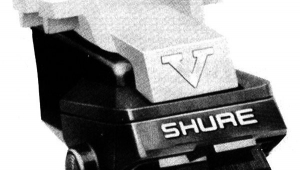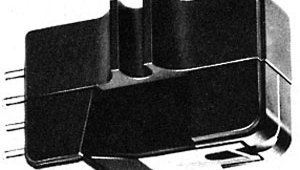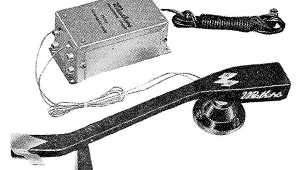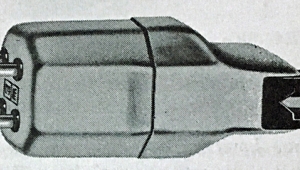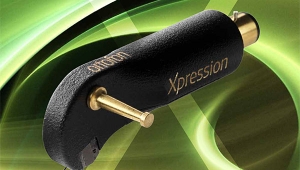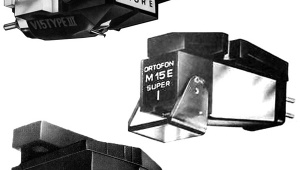| Columns Retired Columns & Blogs |
Brinkmann EMT Titanium phono cartridge Page 2
From within that space, a wealth of realistic sonic detail emerged—something I also like well. I've written before about my fondness for Leonard Cohen's New Skin for the Old Ceremony (Columbia C 33167), and how that 1974 album really came to life for me when I acquired my first moving-coil phono cartridge. The Brinkmann EMT extracted still more realism—Cohen's nylon-string guitar sounded even righter than before, with no trace of brightness. The acoustic and electric basses on the record sounded fine, too, with similar gains in texture and believable color.

On John Barbirolli and the Philharmonia Orchestra's recording of Elgar's Enigma Variations (EMI ESD 7169), the Titanium impressed me with its unfailingly good sense of flow—another reason I tend to enjoy EMT's house sound. The Brinkmann EMT allowed lines of notes to keep their full temporal meanings intact, and never let me forget that good music is a moving, changing event in time—not merely a nice-sounding still life, as certain "high-end" products would have it.
The Titanium did a superior job—no other words for it—of communicating everything that's special about Ella Fitzgerald's voice on "The Man I Love," from the Gershwin Song Book collection (a Speakers Corner reissue of Verve MG VS-6082-5). And on the following song, "That Certain Feeling," the Titanium did all that and made the instrumental backing sound more present and real than usual. My only caution: This record (and others) gave proof that the Titanium responded to careful setup, especially of arm height and vertical tracking angle—without which, vocal sibilants could be a bit exaggerated.
The first, eponymous LP by the David Grisman Quintet (Kaleidoscope F-5) gave the Titanium cartridge another opportunity to shine, letting Darol Anger's violin and Tony Rice's Martin D-28 guitar sound exactly like their richly textured selves on such numbers as "E.M.D." and Tony's own "Swing 51." On the latter, the Brinkmann EMT cartridge again did an exceptional job of letting the string bass sound just the way it should: weighty, colorful, and textured, with a fine sense of musical pacing. Ditto Grisman's old Gibson F-5 mandolin on "Opus 57," a reprise of a theme he'd played with Clarence White only two years earlier ("Opus 57 in G Minor," from the recommendable Muleskinner Live, Sierra SXCD-6000).
The Brinkmann EMT wasn't just a warm, colorful texture machine with classical music and acoustic folk; it was also well suited to upbeat electric pop. When the mood struck to pull out the old Talking Heads album Fear of Music (Sire SRK-6076)—which didn't sound quite as dated as I feared it might—the Titanium turned in a good, engaging performance. Rhythms were metronomically right, with a fine sense of drummer Chris Frantz leaning into his patterns, and the generally interesting guitar overdubs on such songs as "Mind" popped out of the mix in a convincing manner.
How did the Titanium compare with my "everyday" cartridge, the Linn Akiva ($2950)? The two products' overall tonal balances were similar, as were their fine spatial presentations. I thought the Brinkmann handled surface noise just about as well as the Lyra-sourced Linn, which has long been the champ in that regard.
Compared with the Linn, the Brinkmann EMT portrayed violin and cello notes as somewhat quicker off the bow, in that they developed, or "bloomed," somewhat sooner after the initial attack. The Linn-Lyra, for its part, emphasized those attack components and gave them a shade more force, which will suit some listeners more than others: Fans of the EMT approach will consider it the more expressive, "romantic" cartridge; those who enjoy the Linn-Lyra sound might frame the debate by saying the Akiva allows more human force behind the notes.
Other comparisons: The Titanium didn't have quite the drama or scale of the Miyabi 47 ($4000), although the German cartridge was lusher and more forgiving of various step-up devices. The ZYX Airy S ($2895) was pleasant and competent but quotidian by comparison. The Supex 900 Super (vintage or NOS only) was richer still but much more colored, and was no match for the Titanium's timing. And the Lyra Helikon ($2195) wasn't quite as lushly textured as the Titanium, though neither was it a product that I'd consider sterile—and it's inarguably a superb value.
Conclusions
Like other middle-aged audiophiles, I've followed the pickup industry through all its recent extremes—from the mass-market companies of the 1960s and '70s, with their emphasis on tracking and flat frequency response, to the individual artisans of the 1980s and '90s, whose products and prices went beyond the realm of consumer electronics, closer to art than commodity. It's hard not to miss an era when the major players seemed bent on outdoing one another in terms of price, exotic materials, and the colorful backgrounds (and supposed frailties) of their craftsmen—but having said that, I do think our choices today are better overall.
The Brinkmann EMT Titanium is a fine example: It does everything I expect from a cartridge exceptionally well. There's a great deal of history and humanness behind it. It's fairly priced—a very good buy for what it is, in fact, although I respect the feelings of people to whom any four-figure needle is beyond the pale—and it's made in such a way that sample-to-sample consistency and the availability of retipping and reconditioning services should both be excellent. Most of all, the Titanium goes beyond merely sounding good: It actually makes music. It's the sort of purchase you can imagine a person caring about.
If you're interested in adding a clean, accurate phono cartridge to your collection of same, but you'd like just a little more warmth and gushiness than the average these days, consider an EMT. If you want all that and more—even more texture, humanity, flow, and noiselessness in the groove—consider a Brinkmann EMT: That's what the Titanium appears to be all about, and that's why I think it's a wonderful thing.
- Log in or register to post comments
